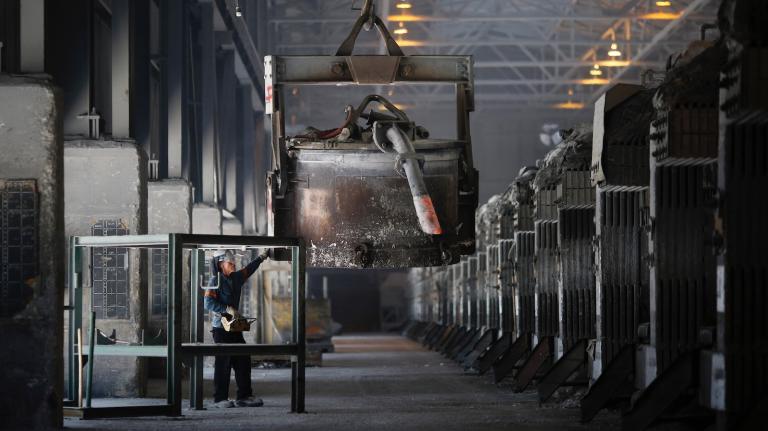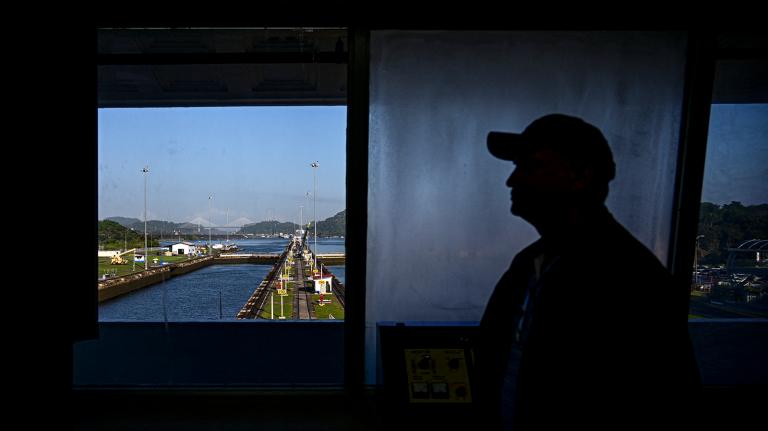A quarter of the annual greenhouse gas emissions in the United States come from electricity generation. The biggest polluters in the sector are the country’s coal-fired power plants — decades-old facilities that emit enormous quantities of carbon dioxide and other pollutants into the air. Federal regulators and policymakers have spent years coming up with a plan for minimizing emissions from fossil fuel-run power stations. The Environmental Protection Agency finally unveiled the results of that work last week: a historic suite of rules that aim to prevent 1.4 billion metric tons of carbon pollution by 2047, the equivalent of annual emissions from 328 million gas cars.
The new rules were finalized under multiple laws, including the Clean Air Act, the Clean Water Act, and the Resource Conservation and Recovery Act. In addition to cutting carbon emissions, they are expected to vastly reduce air, water, and soil pollution from fossil fuel-fired power plants by preventing toxic discharge into rivers and streams, better controlling coal ash pollution, and reducing toxic mercury emissions.
Of the four new rules, one in particular sets a new precedent by being the first to require the implementation of carbon capture and storage, or CCS, in order for certain existing plants to continue operating. Some of the facilities that fall under the rules are the more than 200 coal-fired power plants across the country that collectively account for more than half of the energy sector’s carbon emissions. Per the regulations, the companies operating these facilities have three options: they can capture 90 percent of their emissions and keep running past 2039, capture a smaller share of emissions and close by 2039, or continue operating normally and retire by 2032.
Carbon capture and storage is a complex, multi-site process that involves trapping the gas at the point of emission and piping it underground to a well where it is injected for long-term storage. And so some climate advocates fear that the rule will only prolong the lives of power plants that run on fossil fuels.
Other critics of the EPA’s rules doubt the technology’s effectiveness, and point out that it has never been deployed on a commercial scale. Despite the hundreds of millions in tax incentives that the Biden Administration allocated to spur the development of CCS, there are currently no operations in the US that capture a substantial portion of a facility’s emissions. The fossil fuel giant Occidental Petroleum quietly abandoned its largest CCS facility in Pecos County, Texas, last October, selling it for a fraction of its construction cost. Elsewhere, Chevron’s massive operation on Barrow Island off the coast of Western Australia is successfully capturing carbon, but challenges in the underground storage system has led it to only store 1.6 million tons per year, under half its capacity.
Still, some other climate advocates say the rule fits well into their overall strategy: Capturing and storing carbon is such an expensive endeavor that some of the country’s oldest and biggest emitters, they hope, will choose to shut down rather than operate under the new rule.
“This is a regulation that on its face appears to be mostly about CCS,” said Emily Grubert, a civil engineer and environmental sociologist at the University of Notre Dame. But Grubert believes that the rule can be harnessed for other ends: “The goal of the climate movement is for it to be about plant retirement.”
Grubert told Grist that it is unlikely many of the operators of these plants will elect to retrofit their facilities with CCS, since adopting the technology can cost companies over $1 billion.
“I don’t want to see carbon capture put on the coal plants. The U.S. coal fleet is very old,” Grubert told Grist. “When you talk about putting multibillion-dollar investments on these plants, that almost certainly guarantees that they will stay open longer than they would have otherwise.”
Advocates who live in communities near CCS infrastructure along the Gulf Coast in Texas and Louisiana applauded some aspects of the new rule, but worried about the safety of the new technology. Capturing and storing carbon involves a complex network of industrial equipment, underground pipelines, and injection wells, each of which has their respective risks. When a pipeline carrying carbon dioxide ruptured in Mississippi in February 2020, dozens of people were rushed to the hospital after experiencing shortness of breath. A similar incident occurred with an Exxon Mobil-owned pipeline in southwest Louisiana last month. With the EPA’s recent decision to grant industry-friendly Louisiana the authority to approve new carbon dioxide wells, advocates worry that the majority-Black communities that live alongside much of the South’s fossil fuel infrastructure will have yet another pollution hazard in their midst.
“We’re looking at a perfect storm,” said Beverly Wright, the executive director of the New Orleans-based Deep South Center for Environmental Justice. “You have this new shiny object that’s gonna solve all our problems by pumping the carbon into the ground. But whose ground?”
Existing coal plants have until 2032 to implement CCS and reduce their carbon emissions by 90 percent or shut down. Some politicians have indicated their determination to fight these requirements and keep the country’s coal fleet running without emissions-reducing technology. When the rules were initially proposed last year, a group of Republican attorneys general led by Patrick Morrisey of West Virginia wrote EPA Administrator Michael Regan a letter saying the regulations would “kill jobs, raise energy prices, and hurt energy reliability.” Last week, Morrisey threatened to challenge the EPA’s finalized decision in court. Separately, Shelley Moore Capito, a Republican senator from West Virginia, said she planned to draft a resolution opposing the rules. But beyond the potential legal and congressional challenges, CCS technology will have to develop substantially over the next decade to be used on a commercial scale.
Nonetheless, Grubert told Grist that it’s important not to discount CCS entirely. While solar and wind farms can replace the country’s rundown coal plants, there are currently few alternatives to clean up major emitters like cement manufacturing plants. In her ideal scenario, the new EPA rules will encourage the coal plants to go offline within the next decade, while spurring investment in other sectors where capturing carbon might be necessary in the interim, to minimize climate warming emissions.
“Begrudgingly, I think we do need to be able to” implement some CCS, Grubert said. “Having a regulatory framework and a regulatory environment that ensures that carbon storage is safe and well communicated to people is a good idea.”



